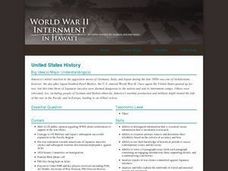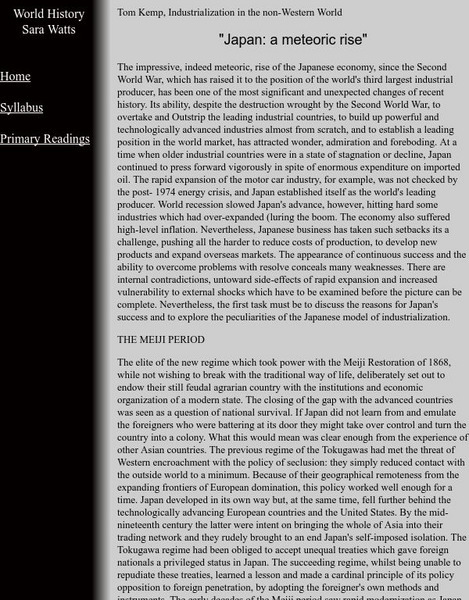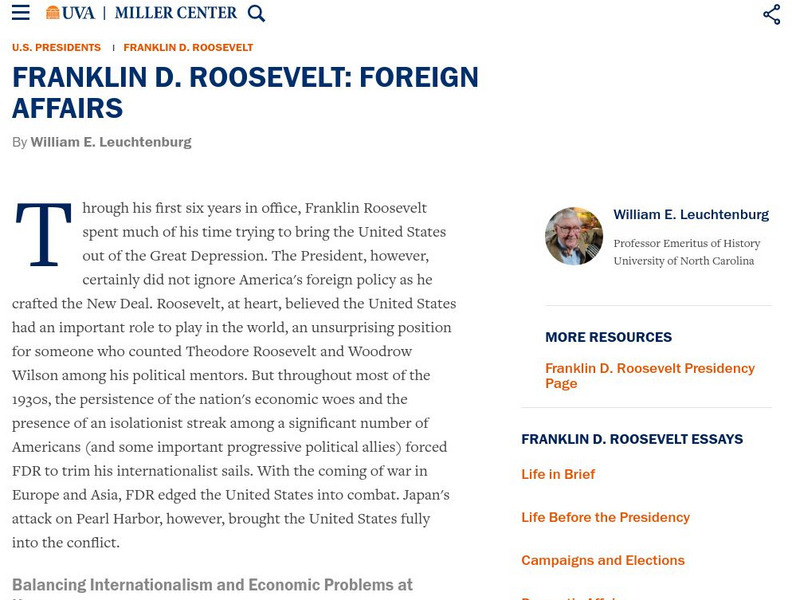Curated OER
American Foreign Policy: 1920 - 1941
Take your class through the period between World War I and World War II. Covering various treaties and pacts between America and its neighbors - namely, Japan, Germany, and the Soviet Union- these slides could inspire some political...
Curated OER
Japan Fact card
In this Japan fact card worksheet, learners use the notes and picture provided to create a note card for study purposes.
Curated OER
Lost Names: Scenes From a Korean Boyhood,
What a great resource to share! Based on the book Lost Names by Richard Kim, this valuable lesson focuses on the Japanese occupation of Korea during WWII. Additionally, it employs first-person journaling as a mode of understanding themes...
Curated OER
Japanese Modernization and Imperialism
Students examine the period in which Japan ended its isolationism with the rest of the world. Using the internet, they identify the reasons why Japan occupied and annexed Korea along with the country's reasons for going to war with...
Curated OER
Why do wars occur?
Understanding the causes of war is one way (possibly) to prevent it. World War II is used as a case study to facilitate an understanding of reasons why wars start. Topics covered included Totalitarianism, scarcity of resources, need for...
Curated OER
World War II: Internment in Hawaii
Students examine world history by writing an essay in class. In this World War II lesson, students identify the attack on Pearl Harbor, the response from the U.S and the effect it had on Japanese-Americans. Students define Japanese...
Curated OER
Cartoons for the Classroom: The Political Dr. Seuss
In this historical events worksheet, students analyze political cartoons by Theodor Geisel. Students respond to 2 talking point questions.
Curated OER
Beginning of World War II
Ninth graders explore how the rise of dictators led to the start of World War II. They identify and explain the main causes for World War II and they explain the causes for the rise of dictators during the 1920's.
Other
Wake Forest University: The Seclusion of Japan
General thoughts on the efforts of Tokugawa officials to keep Japan free of outside influence, in particular, on the acts of 1635(Closed Country Edict) and 1639 (Exclusion of the Portugese).
Other
Wake Forest University: Japan: A Meteoric Rise
In this excerpt from a larger work on industrialization in the non-Western world, find a detailed history of late nineteenth-century Japan, the period during which Japan was forced out of isolation.
University of Virginia
Miller Center at Uva: u.s. Presidents: Franklin Delano Roosevelt: Foreign Affairs
Scroll through this discussion of Franklin Roosevelt's attention to foreign policy during his several terms in office to "Confronting Germany and Japan" and "Descent into War." Here you will find out about the United States' position of...
University of Pittsburgh
University of Pittsburgh: National Seclusion Act of 1636
Provides the actual text of the Japanese Closed Country Edict of 1636 (known as the Sakoku).
Khan Academy
Khan Academy: Fdr and World War Ii
Discusses how Franklin D. Roosevelt guided the United States through World War II and laid the groundwork for Harry Truman to assume the role after his death.












